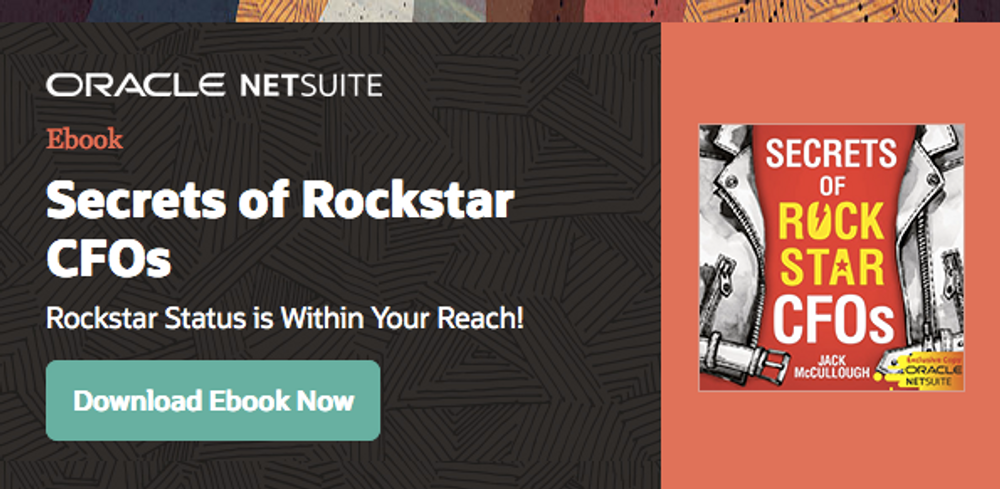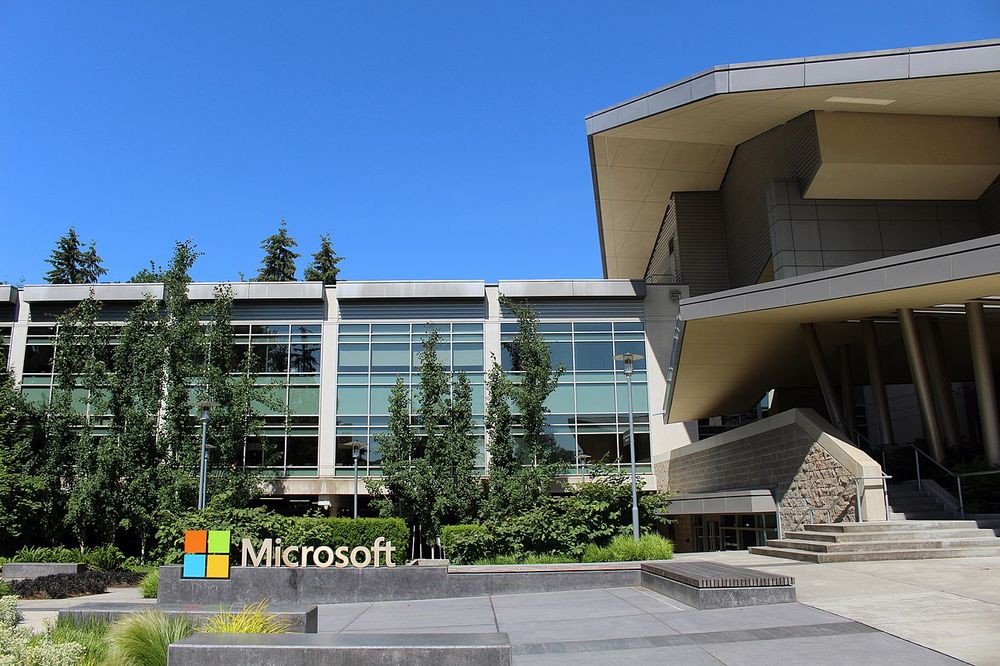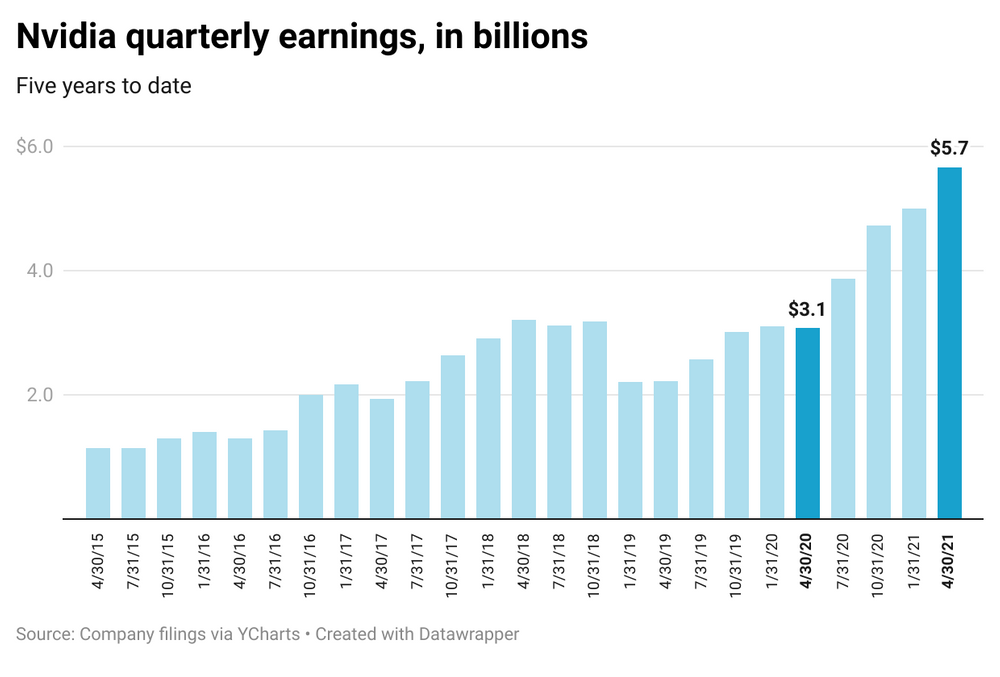|
Happy Friday. By the time this newsletter hits your inbox, we’ll all be OOO enjoying a company-wide half-day ahead of Memorial Day weekend. That enjoyment comes at a hefty cost, though: There will be no Emerging Tech Brew on Monday. See you all next Wednesday.
In today’s edition:
 Waveguides Waveguides
 Cloud guide Cloud guide
 Green software Green software
—Ryan Duffy, Hayden Field, Dan McCarthy
|
|

Francis Scialabba
|
Snap recently acquired WaveOptics, a UK-based augmented reality display maker, for half-a-billion dollars. Snapping up the supplier strengthens the social media company’s skunkworks search for superiority in smart glasses. Do not try saying that fast five times in a row.
WaveOptics will build bespoke waveguides (i.e., display elements) for the Snapchat parent. Snap says it will still remain a supplier to other companies, but whether its competitors can rely on its word is another question.
- The Verge, which broke the news of the acquisition, referred to it as “partly a defensive move by Snap.”
Why are waveguides such an important piece of the puzzle?
Most AR-curious or -devoted companies see mastery of waveguides as essential to eventual mass-manufacturing of mainstream hardware.
While we don’t have the physics credentials to fully unpack optical AR technology for you, in short, waveguides involve microprojecters that emit light, granular display materials, and refracting visual images into your eyeballs at a precise angle. Waveguides themselves are millimeter-thin, transparent lenses...like contacts, but make it the Roaring 2020s.
Also riding the wave: Independent waveguide-making companies include Lumus, Vuzix, Digilens, and Dispelix. Familiar Big Tech faces like Apple and Facebook have also worked on waveguides.
You know a science project is important to a company when...
...the CEO is sweating the details of AR technical constraints, from processing power on and off the device to power management. Mark Zuckerberg and Evan Spiegel might not be micromanaging their AR labs, but they’re both proficient in publicly chatting about the tech specs.
Seeing 20/20: Beyond Snap and Facebook, plenty of players are on the decades-long quest to win AR.
What does that mean for upstream suppliers like WaveOptics? Look to AI as an instructive example. Today, top-flight machine-learning engineers command massive corporate salaries. With AR set to become the next Big Tech battleground, expect optical imaging experts to be recruited with AI-like gusto, and their startups acqui-hired for high premiums.
WaveOptics’s founders are engineers who previously developed optical technology for fighter pilot helmets. PitchBook recently estimated its valuation at $105 million. The company just exited for nearly 5X that amount.—RD
|
|

Francis Scialabba
|
The global cloud computing market is worth $270 billion and powers countless applications, but unless you work directly with the tech, you may think of "the cloud" as an ethereal, hard-to-pin-down buzzword.
But...the cloud’s ability to connect many remote machines virtually—and allow people located anywhere to collaborate in real time—is powered by very tangible things like cables, servers, and data centers. And lots and lots of people.
So let’s bring things back down to Earth. In our guide to the cloud, we look at…
- The history of cloud computing
- Key terms like public and private cloud and SaaS, PasS, and IaaS
- Industries transformed by cloud computing
- Hot topics like security and compliance, industry clouds, and data portability
Click here to read the guide in full.—HF
|
|
SPONSORED BY ORACLE NETSUITE
|

|
What’s the number one playlist of Rockstar CFOs? We can honestly say that we don’t know the answer to that question. But we do know what’s on their reading list: Secrets of Rockstar CFOs, the guide by Jack McCullough.
Jack created this chart-topper e-book after recognizing that, although each CFO’s path is unique, Rockstar CFOs share many traits. And while extra points go to those who can shred the guitar, the main thing is understanding the missions, goals, and objectives of the organization you lead.
Which is where jammin’ Jack comes in. His e-book will teach you:
Go from regular old CFO to Rockstar CFO and download the e-book today.
|
|

Coolcaesar, Building92microsoft, CC BY-SA 4.0
|
Along with Accenture, GitHub, ThoughtWorks, and the Linux Foundation, Microsoft is helping form the Green Software Foundation (GSF).
The nonprofit says it will set engineering standards to help the sector meet its Paris Agreement goal: slashing greenhouse gas emissions by 45% by 2030. As steering committee members, Microsoft and the other founding partners will pay $100,000 membership fees to the GSF.
But, but, but...Even in light of the GSF’s goal to reduce carbon emissions in software, Microsoft told Emerging Tech Brew it won’t revisit the many oil and gas partnerships it has for cloud computing. Microsoft VP of Developer Relations Jeff Sandquist said in an email statement that the company is “committed to working with all our customers, including those in the oil and gas business.”
Azure, Microsoft’s cloud arm, provides AI, machine-learning, and computer vision tools to Chevron, BP, Shell, Exxon subsidiary XTO, and Equinor (formerly Statoil). Chevron, Exxon, BP, and Shell are respectively the third-, fourth-, sixth-, and seventh-largest carbon-emitting companies on the planet.
- The Chevron and Equinor deals are each worth hundreds of millions of dollars.
- Google Cloud and AWS, Microsoft’s biggest cloud computing competitors, also have similar partnerships.
Sandquist said, “We believe the best path to a sustainable future is to help accelerate the energy transition,” but it’s unclear how the current projects help the transition to clean energy given that many center on making fossil fuel production more efficient. For instance...
- Microsoft's XTO project delivers “new insights into well operations and future drilling possibilities.”
- The Chevron deal is in part meant to enable more efficient oil exploration.
Microsoft declined to say how these partnerships square with the goal of accelerating a clean energy transition.
Big picture: The generous view of these projects is that by making fossil fuel production more efficient, Microsoft is helping reduce waste in a harmful process. The skeptical view is that making fossil fuel production more efficient makes it more profitable, and therefore more appealing to oil and gas companies. Both things are likely true.—DM
|
|

Dan McCarthy
|
Stat: Nvidia quarterly revenues increased 84% year over year, according to its latest earnings—bringing in $5.66 billion and beating Wall Street projections.
Quote: “This is a transformation that is going to happen over 30 years and possibly longer.”—Aurora CEO Chris Urmson on the timeline for autonomous vehicles
Read: How Chicago’s predictive policing program caused shootings it was meant to prevent.
Electrify your IT: When you book a meeting with Electric and upgrade your IT, not only do you beat the competition, you get a free pair of Beats Solo3 Wireless headphones. Chat with Electric today.*
*This is sponsored advertising content
|
|
SPONSORED BY MIT AND ESME LEARNING
|

|
Level up your career with a world-class learning experience. You can take an online course from MIT—yep, that MIT— about Leading Health Tech Innovation or AI Leadership. You’ll learn from MIT faculty and renowned guest speakers, plus build a richer professional network. The best part? One ETB subscriber will land free tuition. Find out more here.
|
|
-
OpenAI is training GPT-3 to write code. It also announced a $100 million startup fund in partnership with Microsoft, which is the exclusive licenser of the language model.
-
Iran is banning cryptomining until September 22, as the country struggles with rolling blackouts across multiple cities.
-
Google is building a multi-billion dollar campus in downtown San Jose, which could take a decade to complete.
-
Andreessen Horowitz is targeting a $2 billion raise for its third crypto fund, per Eric Newcomer.
|
|
|
Three of the following news stories are true, and one...we made up. Can you spot the odd one out?
- The cofounder of investment firm Guggenheim Partners says he wants to build an NFT museum/blockchain network hub that would also be NYC’s tallest tower.
- Epic Games CEO Tim Sweeney went to Popeyes right after the end of his company’s antitrust lawsuit against Apple.
- Chevy said the Ford F-150 Lightning’s Mega Power Frunk is “child’s play” compared to the frunk concept it’s working on.
- Amazon created meditation booths for its warehouse workers who are stressed on the job.
|
|
|
Catch up on the top Emerging Tech Brew stories from the past few editions:
|
|
|
Enjoying the newsletter? Share it with your network to take advantage of our rewards program.
When you reach 5 referrals, we'll send you this Morning Brew sticker sheet.

Hit the button below to learn more and access your rewards hub.
Click to ShareOr copy & paste your referral link to others:
morningbrew.com/emerging-tech/r/?kid=303a04a9
|
|
|
Written by
Dan McCarthy, Hayden Field, and Ryan Duffy
Was this email forwarded to you? Sign up here.
|
ADVERTISE // CAREERS // SHOP // FAQ
Update your email preferences or unsubscribe here.
View our privacy policy here.
Copyright © 2021 Morning Brew. All rights reserved.
22 W 19th St, 8th Floor, New York, NY 10011
|
|










